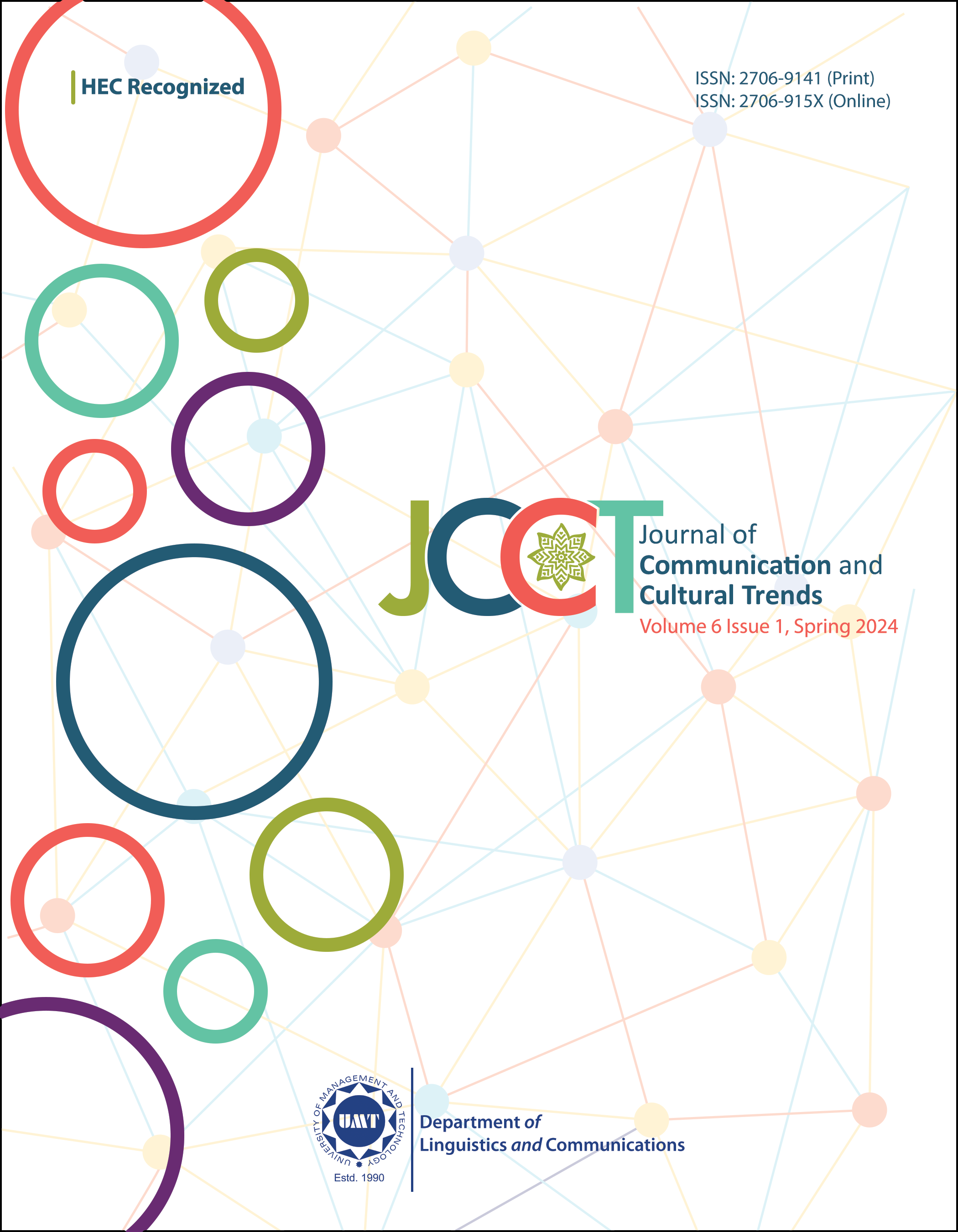Appraisal Analysis of Women Representation in Matrimonial Advertisements
Abstract
 Abstract Views: 0
Abstract Views: 0
The language employed in matrimonial advertisements has a considerable impact on how people perceive marriage and gender roles. In addition to reflecting and reinforcing societal norms, values, and gender roles, the language used in matrimonial ads may have an impact on how individuals and families view themselves and one another in the setting of marriage. The current study explored linguistic choices in marriage ads to depict women in traditional gender roles and how they contribute to the representation of women. Matrimonial websites and social media platforms were used to compile a corpus of matrimonial ads. The current study utilized Systemic Functional Linguistics' appraisal theory to explore women representation in matrimonial ads. About 43 matrimonial ads were analyzed by using the ATLAS.ti software, for lexico-grammatical choices pertaining to judgment and appreciation. To identify the linguistic features and patterns, the textual content of matrimonial ads was analyzed linguistically. This analysis concentrated on lexical choices, linguistic structures, and presence of evaluative language, all of which align with appraisal theory concepts. The study determined that women are mostly categorized in terms of their physical attributes, such as beauty, height, weight, their age, occupation, education, character, and nature.
Downloads
References
Bordoloi, A., & Srimathi, S. P. (2021). The condescending and misogynistic portrayal of women in media. KnowEx Social Sciences, 1(2), 1–10. https://doi.org/10.17501/27059901.2020.1201
Butler, J. (1990). Gender Trouble: Feminism and the subversion of identity. Routledge.
Dei, F. (2016). Socio-Cultural analysis of marriage: Introspection into matrimonial advertisements. International Journal of Recent Scientific Research, 7(1), 8388–8394.
Goffman, E. (1979). Gender advertisements. Springer.
Gupta, R., (2021, February 3). Stop promoting regressive matrimonial ads that shame women. ShethePeople. https://www.shethepeople.tv/top-stories/opinion/regressive-matrimonial-ads/
Halliday, M. A. K. (1994). An introduction to functional grammar (2nd ed.). Hodder Education Publishers.
Khan, L. A., & Ateeq, A. (2017). Construction of gendered identities through matrimonial advertisements in Pakistani English and Urdu newspapers: A critical discourse analysis. Almas Urdu Research Journal, 19(1), 17–17.
Martin, J., & White, P. R. R. (2005). The language of evaluation: Appraisal in English. Palgrave Macmillan.
Pakistani-American Muslim Matrimonial. (n.d.). Home [Facebook Page]. Facebook. Retrieved January 15, 2024, from https://www.facebook.com/groups/255933968750413
Palomino-Manjón, P. (2022). Feminist activism on Twitter. Journal of Language Aggression and Conflict, 10(1), 140–168. https://doi.org/10.1075/jlac.00049.pal
Sen, R. (2016). Book review: Srimati Basu. 2015. The trouble with marriage: Feminists confront law and violence in India. Contributions to Indian Sociology, 50(3), 461–463. https://doi.org/10.1177/0069966716657493
Shabir, A., & Khan, T. A. (2022). Media as an instrument of reflection or distortion of the real life problems of Muslim women in India. Journal of Social Inclusion Studies, 8(1), 86–96. https://doi.org/10.1177/23944811221096943
Thompson, G. (2014). Introducing functional grammar. Taylor & Francis.
Titzmann, F.-M. (2013). Changing patterns of matchmaking: The Indian online matrimonial market. Asian Journal of Women's Studies, 19(4), 64–94. https://doi.org/10.1080/12259276.2013.11666166
Titzmann, F.-M. (2011). Matchmaking 2.0. The representation of women and female agency in the Indian online Matrimonial market. Internationales Asienforum, 42(3–4), 239–256. https://doi.org/10.11588/iaf.2011.42.153
Copyright (c) 2024 Sumbal Sarwar, Summaiya Naveed, Sadia Irshad

This work is licensed under a Creative Commons Attribution 4.0 International License.

This work is licensed under a Creative Commons Attribution 4.0 International License. Authors retain copyright and grant the journal right of first publication with the work simultaneously licensed under a Creative Commons Attribution (CC-BY) 4.0 License that allows others to share the work with an acknowledgement of the work’s authorship and initial publication in this journal.








